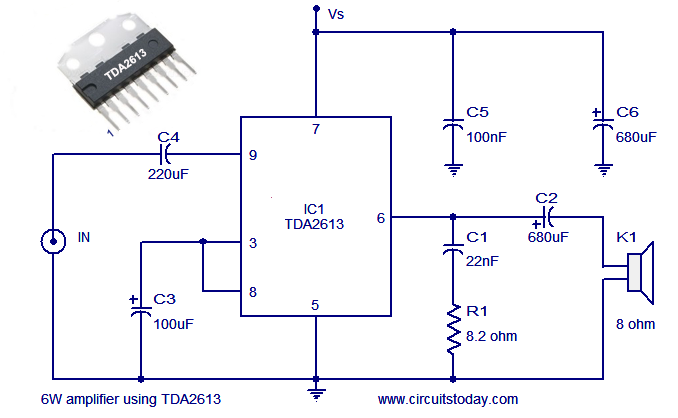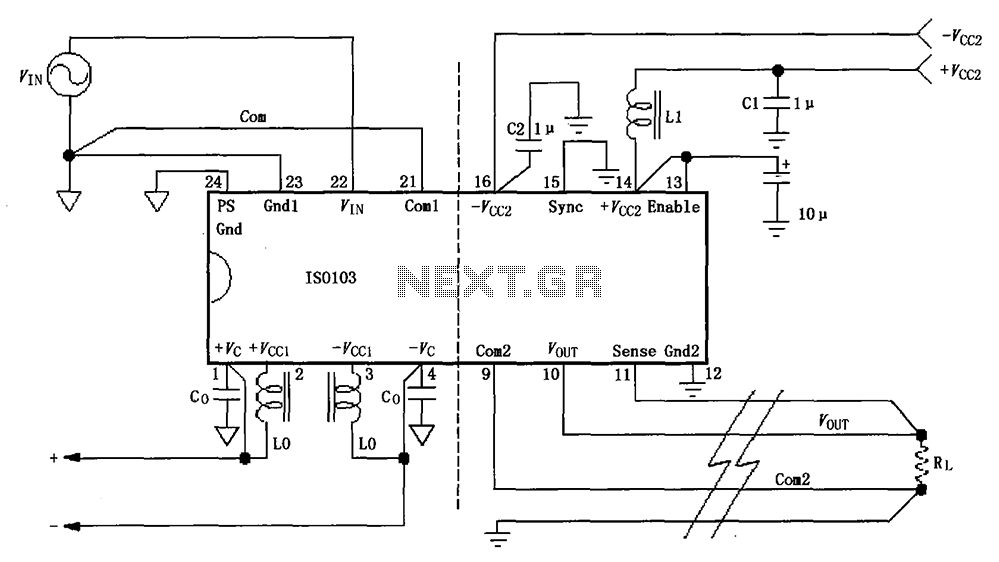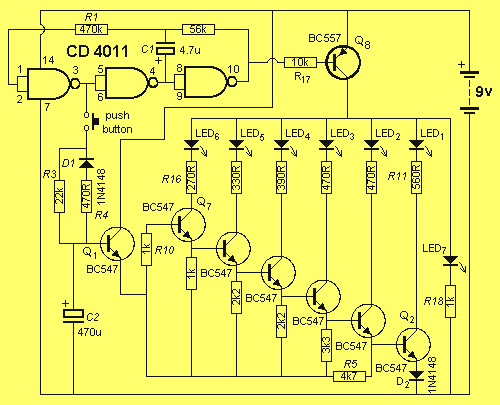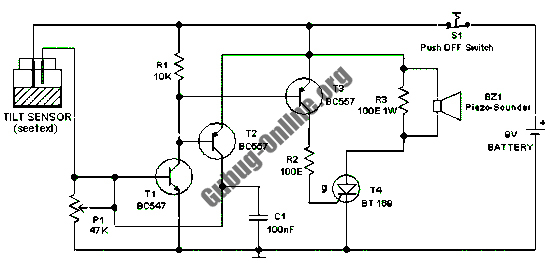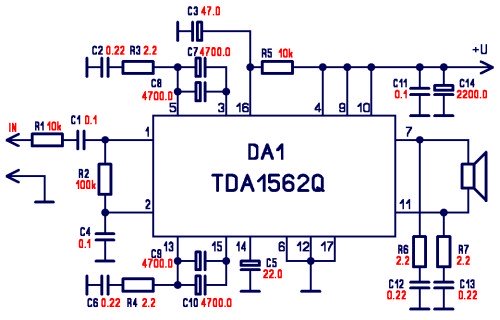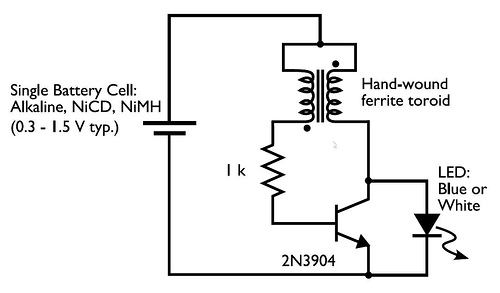
Comparison of various circuit diagram VI conversion and a constant current source
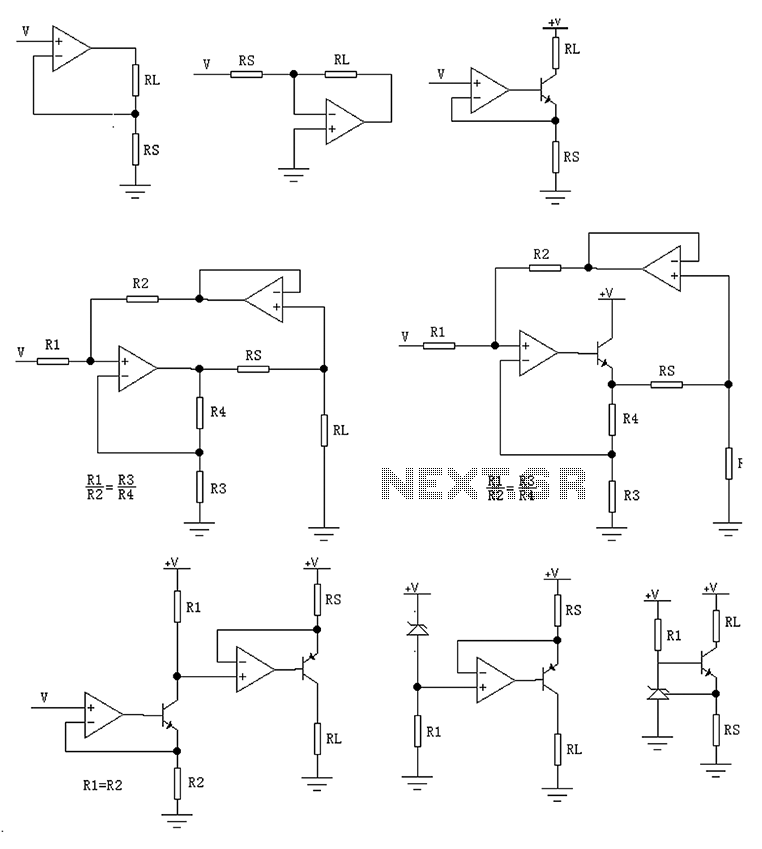
The circuit is designed to provide several constant current outputs to the load resistor RL. The first RL is floating and is rarely utilized. The second RL serves as a virtual ground and is not commonly used either. The third RL is also floating but is connected to the positive power supply terminal, making it more frequently employed. The fourth RL features positive feedback balancing, as it is grounded, which is preferred by users. The fifth RL operates on the same principle as the fourth but is designed to expand the current output capacity, making it suitable for a broader range of applications. In many instances, users may bypass the follower amplifier and connect the load resistor R2 directly to RL. The fifth RL circuit also grounds the load, with both configurations following the constant current source circuit. A comparison of various V/I circuits shows that devices like transistors, which are not inherently bidirectional, can achieve constant current exchange. When transistors are incorporated, they can only facilitate unidirectional DC current. The fourth and fifth configurations are based on balanced positive and negative feedback. Any errors arising from resistance and loss of balance will impact the characteristics of the constant current output, causing the output current to vary with load. Other resistance errors may only affect the output current value without altering the output characteristics. If the output current or the collector current and emitter current of the transistor are not equal, MOSFET transistors can be used as replacements.
The described circuit utilizes multiple load resistors (RL) to achieve various constant current outputs, each configured for specific applications. The floating first RL is typically avoided due to its lack of utility, while the second RL, acting as a virtual ground, is seldom employed in practical scenarios. The third RL, however, is commonly connected to a positive power supply, facilitating more frequent use in applications requiring stable current.
The fourth RL introduces a positive feedback mechanism, which is grounded and preferred for its stability in maintaining constant current outputs. This configuration is particularly advantageous in applications where load variations are expected, as it helps maintain output consistency. The fifth RL builds upon the principles of the fourth, enhancing the circuit's current output capacity, making it suitable for heavier loads. This allows users to directly connect load resistor R2 to RL, often omitting the need for a follower amplifier, thus simplifying the design.
The circuit's ability to maintain constant current is critically dependent on the balance of positive and negative feedback. Any discrepancies in resistance or loss of balance can lead to variations in output current, which can adversely affect performance. In scenarios where the output current does not match the expected values, or where the collector and emitter currents of the transistor do not align, utilizing MOSFETs may provide a more effective solution due to their superior characteristics in managing current flow.
In summary, the circuit's design emphasizes flexibility and reliability in providing constant current outputs across various configurations of load resistors. Its ability to accommodate different loads while maintaining stable performance makes it a valuable asset in electronic applications requiring precise current management. As shown, the circuit can get several constant current output to the load resistor RL. Since the first RL floating, rarely used. The second RL is a virtual ground, do not often use. Although RL third floating, but a termination RL positive power supply terminal, more commonly used. The fourth is a positive feedback balanced, due to the load RL ground and loved by the people. The fifth and fourth on the same principle, but expanded the current output capacity, large multi-use people often take over the load resistor R2 RL, omitted follower amplifier. The fifth is a circuit I would like also to ground load, two are behind the constant current source circuit.
Comparison of several V/I circuit, those who are not just one-way devices like transistors, can achieve constant exchange, after the addition of the transistor can only do a unidirectional DC current. The fourth and fifth are built on the basis of balanced positive and negative feedback, and if the error due to the resistance and loss of balance, will affect the constant current output characteristic, that is, the output current will vary with load.
And several other resistance error affects only the value of the output current, without affecting the output characteristics, if the output current, or collector current and the emitter current of the transistor is not equal too, can be replaced by transistors MOSFET.
The described circuit utilizes multiple load resistors (RL) to achieve various constant current outputs, each configured for specific applications. The floating first RL is typically avoided due to its lack of utility, while the second RL, acting as a virtual ground, is seldom employed in practical scenarios. The third RL, however, is commonly connected to a positive power supply, facilitating more frequent use in applications requiring stable current.
The fourth RL introduces a positive feedback mechanism, which is grounded and preferred for its stability in maintaining constant current outputs. This configuration is particularly advantageous in applications where load variations are expected, as it helps maintain output consistency. The fifth RL builds upon the principles of the fourth, enhancing the circuit's current output capacity, making it suitable for heavier loads. This allows users to directly connect load resistor R2 to RL, often omitting the need for a follower amplifier, thus simplifying the design.
The circuit's ability to maintain constant current is critically dependent on the balance of positive and negative feedback. Any discrepancies in resistance or loss of balance can lead to variations in output current, which can adversely affect performance. In scenarios where the output current does not match the expected values, or where the collector and emitter currents of the transistor do not align, utilizing MOSFETs may provide a more effective solution due to their superior characteristics in managing current flow.
In summary, the circuit's design emphasizes flexibility and reliability in providing constant current outputs across various configurations of load resistors. Its ability to accommodate different loads while maintaining stable performance makes it a valuable asset in electronic applications requiring precise current management. As shown, the circuit can get several constant current output to the load resistor RL. Since the first RL floating, rarely used. The second RL is a virtual ground, do not often use. Although RL third floating, but a termination RL positive power supply terminal, more commonly used. The fourth is a positive feedback balanced, due to the load RL ground and loved by the people. The fifth and fourth on the same principle, but expanded the current output capacity, large multi-use people often take over the load resistor R2 RL, omitted follower amplifier. The fifth is a circuit I would like also to ground load, two are behind the constant current source circuit.
Comparison of several V/I circuit, those who are not just one-way devices like transistors, can achieve constant exchange, after the addition of the transistor can only do a unidirectional DC current. The fourth and fifth are built on the basis of balanced positive and negative feedback, and if the error due to the resistance and loss of balance, will affect the constant current output characteristic, that is, the output current will vary with load.
And several other resistance error affects only the value of the output current, without affecting the output characteristics, if the output current, or collector current and the emitter current of the transistor is not equal too, can be replaced by transistors MOSFET.
